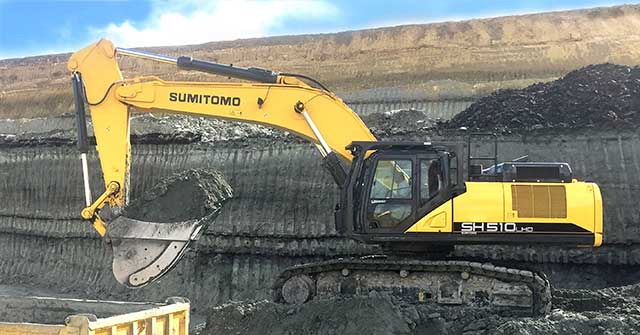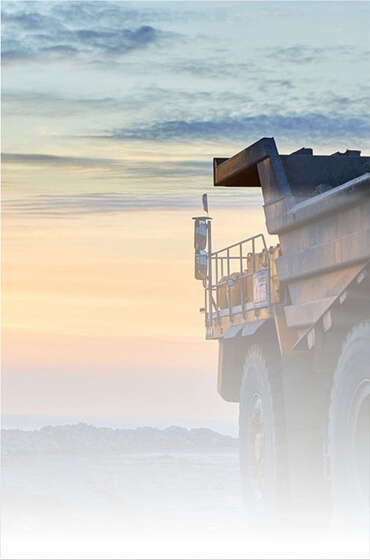India 's energy and shipping ministries have been promoting the use of waterways and air ropeways for the transport of energy for more than five years. With the Draft Environmental Impact Assessment Notification (EIA) 2020, a major push is expected for these modes of transport. The plan, published in March, recommends that they be spared the expert committee's evaluation of the need to take public opinion into account and prepare detailed reports on their impacts. However, past studies and experts suggest that the crucial impacts of coal transport can be overlooked.
In India, coal is mainly transported by rail and road. In 2019-20, according to the Ministry of Coal, nearly 50 percent of the coal was transported by rail and 32 percent by road. In the last few years, however, both these modes of transport have been under enormous pressure from both companies and the public, due to increased costs and pollution, respectively.
Responding to the criticism, between 2012 and 2017, the Ministry of the Environment, while allowing exemptions for the expansion of coal mines, linked them to the mode of transport (conveyor systems and rail wagons) as an attempt to discourage the use of roads for the movement of coal.
It has made the Ministry of Coal turn gears. At a meeting with the Committee of Secretaries on 24 October 2018, the coal ministry suggested that coal companies should explore the increased use of conveyor belts and overhead ropeways for the transport of coal within a distance of 10 to 50 km. The Ministry claimed that this would increase fuel usage, emissions and transport costs.
The use of national waterways for bulk freight movements has been moved forward since 2012. In 2016, with the National Waterways Act, the Ministry of Shipping initiated its proposal to turn 111 rivers into waterways, of which 37 were prioritized. The National Mineral Policy of 2019 stated that waterways should be "promoted." Keeping in line with the popular belief that these modes are cheap and environmentally friendly, this year's Environment Ministry in the Draft EIA Notification included a number of relaxations to facilitate their 'easy' environmental impact assessment.
Modification of environmental impact assessment procedures
The notification of the EIA shall lay down the procedure for granting environmental clearance after due consideration of the environmental and social impacts of any construction project. On 12 March, the Ministry issued a draft notification to the EIA, which is intended to replace the 2006 iteration of the law. In this plan, the Ministry of the Environment categorizes all rivers and ropeways situated in ecologically vulnerable areas as B2 projects. B2 projects are granted environmental authorisations that require minimal scrutiny, which may also be bypassed by a public consultation and preparation of a detailed EIA report, not by an expert assessment committee, but by a national regulatory authority and a project. Previously, ropeways were categorized into two groups – those to be located at an altitude of 1000 m and those to be constructed in ecologically sensitive areas were categorized as A, to be measured at the central level, and the rest were categorized as B2.
While the rivers were not specifically stated in the 2006 EIA Notification, dragging, which is a key component of the construction and maintenance of the waterways, came under its purview. While maintenance dragging, if part of the original plan, was excluded from the EIA, in 2017 the expert committee determined that waterways should be classified as A category projects, such as Shripad Dharmadhikary and Avli Verma of Manthan Adhyan Kendra, a water & energy research organization, Pune shared in their 2019 paper.
In addition to the Environment Management Plan, the EIA report provides a project overview, an analysis of alternatives (which become more important in the case of wildlife corridors, ecologically sensitive and highly polluted areas, heritage sites, etc.) and an environmental summary (anticipated effects, mitigation steps, environmental monitoring methods, cost-benefit analysis). A comprehensive review under the EIA guarantees clearance requirements that are legally binding to take account of site specifics, demography, current pressures and risks. Even the feasibility and desirability of a project, which may differ from case to case, will be investigated. With the latest plan, there is fear that such an assessment would not be carried out by ropeways and waterways.
Switch to new modes of transport of coal
As recently as 3 February 2020, Union Coal Minister Prahlad Joshi, in a reply to Rajya Sabha, told that captive modes of coal transport, such as Merry Go Round or MGR (Closed Circuit Rail System), belts and ropeways, are being promoted to supply coal to powerhouses.
Last year, the Ministry of Environment gave a further relaxation to the aerial ropeway projects. On 27 June 2019, the Forest Advisory Committee, on the basis of a request from the Government of Himachal Pradesh, decided to exempt ropeway projects from the requirement to obtain forest clearance provided that they were for 'public use' purposes, were constructed 5 m above the tree line and only the forest area under terminal stations and towers would be diverted to the project. The Committee took the view that ropeway projects are "eco-friendly and contribute to conservation." The Environment Ministry's forest conservation division sealed the decision in August 2019. At the time being, the exemption is only for Himachal Pradesh, but experience with policies such as coastal law 2019 indicates that its extension to other states could well be underway.
Waterways are also used for the transport of coal. In 2018-19, 72.31 million metric tons of cargo were transported to the National Waterways, 34% of which was coal and ash, according to the Inland Waterways Authority of India (IWAI).


































